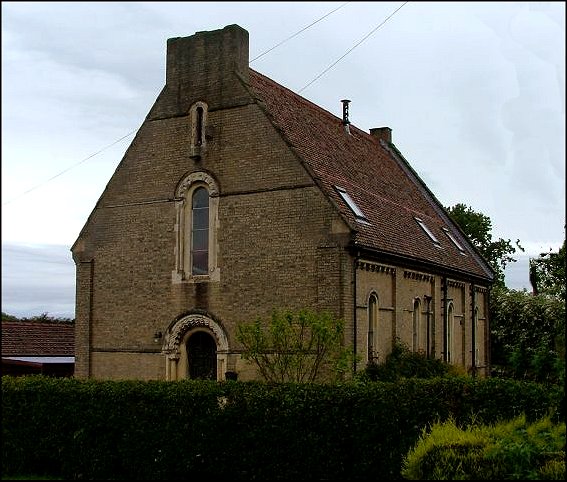
home I index I latest I glossary I introductions I e-mail I about this site
St Edmund, Walpole Highway

St
Edmund, Walpole Highway
|
| The tide
of religious enthusiasm has receded, and we all have our
own means of transport, and so there is no need for an
Anglican church at Walpole Highway anymore. It has been
sold off to become a pleasant-looking private residence.
And, of course, St Edmund was one of hundreds of similar
churches all over England, and one of quite a number even
in Norfolk. But it was, as Pevsner observes, a remarkable
church in its own way. The architect was JC Buckler, who
we have previously met nearby at Welney. What might have
been an otherwise conventional yellow brick chapel has
been lifted out of mediocrity by three unusual aspects. Firstly, as early as 1844, Buckler used here a sophisticated Norman styling. Nineteenth century Norman can be excrutiating, but here Buckler pulls it off with aplomb, a magnificent Norman doorway at the west end being echoed in arcades of windows to south and north. |
home I index I latest I glossary I introductions I e-mail I about this site